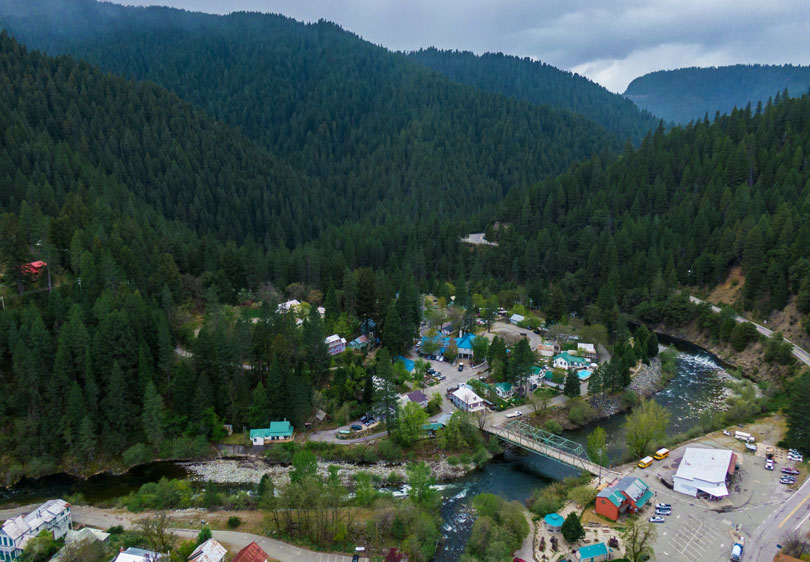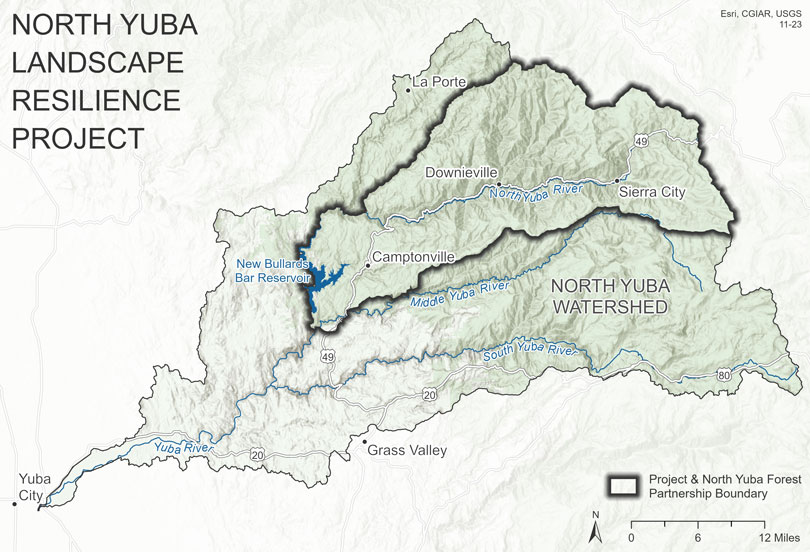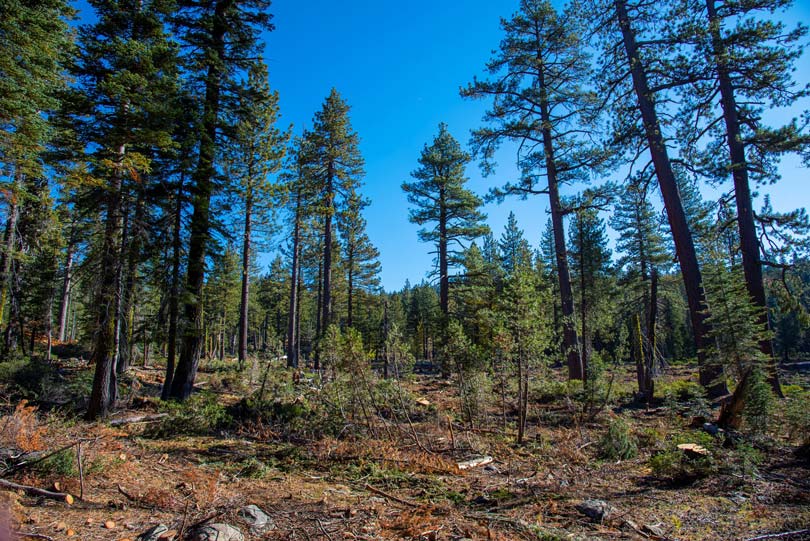
Just five years ago, the North Yuba River watershed was like many places in the Sierra Nevada, at high risk of suffering from a large and damaging wildfire and without a plan, or money, to meaningfully reduce that danger.
Today, the risk remains, but, thanks to early funding from the Sierra Nevada Conservancy (SNC), and the dedicated focus and hard work of the North Yuba Forest Partnership, the Tahoe National Forest has a comprehensive plan to restore 275,000 acres—and $160 million of federal funding to do it.
“The North Yuba watershed is experiencing a lot of overgrown timber stands that are not healthy, so we’ve been concerned about that area for quite some time, as well as the communities in the North Yuba,” said Eli Ilano, Forest Supervisor of the Tahoe National Forest, soon after receiving the news of the federal investment. “This type of project is a scale that has not been undertaken in California, let alone anywhere in the country. This was a big endeavor, and, incredibly, thanks to funding from the U.S. Forest Service, we can now begin implementation to restore this highly vulnerable and unhealthy watershed.”
SNC funds North Yuba landscape plan
The threat of fire and a desire to restore forest health and wildfire resilience throughout the 313,000-plus acre North Yuba River watershed has been on the minds of concerned locals and land managers for decades.
In 2018, those worries started to turn into a plan of action after the Sierra Nevada Conservancy awarded $500,000 to Sierra County to launch a fuels-reduction effort on 267 acres near the communities of Sierra City and Bassetts. The work and collaboration on that project helped solidify the formation of the North Yuba Forest Partnership and led to a $200,000 grant in 2020 to the South Yuba River Citizens League, one of nine organizations that make up the Partnership, for a detailed landscape plan to reduce fuels across 275,000 acres.
Now completed, it is a plan many are excited to finally see get done.
The onset of this all, the concept, was created through early grants by the SNC, but many of us have been pushing for treatments in that watershed for many years now. This is the only watershed left in the Sierra that has not had a catastrophic wildfire, so we’re trying to circumvent that going forward. Because it’s not a question of if, it’s a question of when we see a wildfire in the area.

Massive federal investment due to planning and partnership efforts
The dedication of the North Yuba Forest Partnership and the fact that such a detailed, landscape-scale plan was already finished, were two main factors for why the North Yuba River watershed was selected as one of 10 regions for federal investment in 2022 as part of the U.S. Forest Service’s Wildfire Crisis Strategy.
Another reason, according to Roen, was seeing the communities and this extremely vulnerable watershed up close and in person.
“A risk assessment team from the federal Forest Service came out from (Washington) D.C. At that point, we were only committed something like $22 or $24 million,” Roen said. “They came out here and we toured the community of Greenville so they could see first-hand what could happen, and what did happen, to that community due to wildfire. The next day we toured Downieville and it became clear to them in a hurry that, while we were thankful for the $24 million, it wasn’t going to do much in the overall scheme of things.”

For the North Yuba Landscape Resilience Project, which the 2020 SNC-funded planning project is now called, the investment grew to $160 million. The incredible increase in funds will allow much-needed work to be completed across 275,000 acres of federal land within the watershed.
“This is really a result of the dedication of all the individuals and organizations that have come together with a common goal,” said Ilano. “The investment from the Forest Service is incredible and we can now move forward with the work so desperately needed on the North Yuba landscape.”
Roen concurred, with one caveat.
“It’s fantastic that we now have all this money, but we need to get the work done,” he emphasized. “It would be embarrassing if we have all this money and things burn up.”
Getting more done faster with forest-resilience bonds
Even as the North Yuba Forest Partnership ramps up implementation with the infusion of federal funds, a few projects in the North Yuba River watershed have already started. These particular projects are paid for with the help of an innovative new financing tool dubbed a forest-resilience bond created by Blue Forest Conservation, one of the founding members of the North Yuba Forest Partnership.
Forest-resilience bonds allow for private investors to help fund urgently needed restoration efforts up front and be paid back over time by the many beneficiaries of healthier, more resilient forests. This combination of private investment with public funding streams allows work to happen years sooner than would otherwise be possible.
But, as Zach Knight, co-founder and chief executive officer at Blue Forest Conservation, emphasized, that still means finding the right combination of good projects in need of funding and bringing together motivated public beneficiaries.
We had this great idea for a model, but we didn’t know where to do it, and we didn’t know who to do it with, so we reached out to the Sierra Nevada Conservancy and they did about 6 months of due diligence. They didn’t just get on board, they found us the forest to work with, they identified the Yuba Water Agency, and we wouldn’t have known where to go, and we wouldn’t have known where this was going to work if it wasn’t for the Sierra Nevada Conservancy.
The Yuba I and Yuba II projects, which will treat 14,545 acres and 48,000 acres, respectively, in the North Yuba Watershed, are the first forest-resilience bonds ever in California.
As the risk of large, damaging wildfires remains high in many dense, unhealthy forests throughout the Sierra-Cascade, the collaborative, innovative approach all partners are taking in the North Yuba River watershed is one that will hopefully be applied to other landscapes in the state.
After all, as Knight and the folks at Blue Forest Conservation often say: “The cost of restoration now avoids the much greater cost of inaction” and “if we don’t treat these forests yesterday we’re going to be in trouble.”
